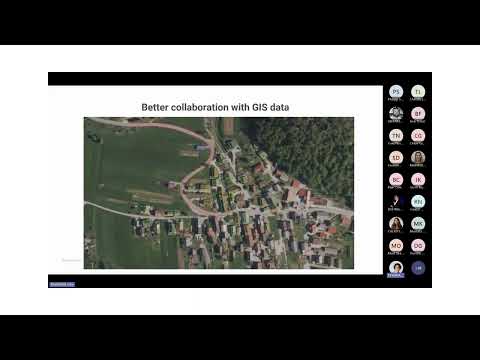Your Cart is Empty
Customer Testimonials
-
"Great customer service. The folks at Novedge were super helpful in navigating a somewhat complicated order including software upgrades and serial numbers in various stages of inactivity. They were friendly and helpful throughout the process.."
Ruben Ruckmark
"Quick & very helpful. We have been using Novedge for years and are very happy with their quick service when we need to make a purchase and excellent support resolving any issues."
Will Woodson
"Scott is the best. He reminds me about subscriptions dates, guides me in the correct direction for updates. He always responds promptly to me. He is literally the reason I continue to work with Novedge and will do so in the future."
Edward Mchugh
"Calvin Lok is “the man”. After my purchase of Sketchup 2021, he called me and provided step-by-step instructions to ease me through difficulties I was having with the setup of my new software."
Mike Borzage
Design Software History: Evolution of Design Software in Waste Management: From Manual Drafting to Advanced Computational Solutions
April 24, 2025 8 min read


Overview of Waste Management and the Imperative for Specialized Design Software
The complex world of waste management has continually evolved since the dawn of modern infrastructure, and the integration of specialized design software into this sector represents a pivotal shift in how communities and industries approach environmental challenges. In earlier eras, manual drafting methods and rudimentary design tools were solely relied upon to plan, layout, and manage waste processing facilities. However, as the global emphasis on sustainability grew and infrastructural demands increased, the need for more precise, reliable, and adaptable design mechanisms became undeniable. The transformation of these manual approaches into sophisticated computer-aided systems has, over the decades, significantly boosted the efficiency and safety of waste management procedures. These advancements were not only a response to environmental concerns, but also an answer to the increasing stringency of regulatory standards imposed by governments and international bodies aiming to mitigate the adverse impacts of industrial waste on ecosystems. The evolution of design software in this domain illustrates how technology can be harnessed to bridge the gap between conceptual planning and practical, real-world applications. It allowed engineers and designers to simulate complex systems, implement advanced computational methods, and ultimately create robust environments for handling waste sustainably. This integration has been marked by a series of deliberate milestones, each fostering improvements that have transformed cumbersome manual processes into highly intuitive digital environments. The journey from analog drawings to dynamic, interactive, and collaborative design platforms has not only optimized the waste management processes but also brought forth significant improvements in environmental compliance, resource allocation, and cost management. When reflecting on the modern implications of these developments, one cannot ignore the critical role of design software in ensuring that waste management systems are not only effective but also adaptive to the continuous evolution of regulatory frameworks and technological innovations. In today’s landscape, the design of effective waste management infrastructure hinges on multifaceted software systems that integrate data analytics, simulation capabilities, and cross-disciplinary collaboration. This transition has been instrumental in streamlining project workflows, thereby meeting both the rigorous standards of environmental agencies and the high expectations of community stakeholders. Moreover, the elevated use of technology in this field highlights an economy-wide recognition of sustainability as a core tenet of modern infrastructure development. As such, the integration of design software into waste management systems signals an era where operational precision, regulatory compliance, and environmental stewardship are realized through the marriage of innovative technology and thoughtful planning. This narrative paves the way for a detailed exploration into the history and technological evolution that has brought about this transformation, reflecting on how past innovations set the stage for the modern, high-tech environments that oversee today’s waste management challenges.
Historical Evolution and Milestones in Waste Management Design Software
The historical evolution of design software, particularly in the realm of waste management, is a testament to how human ingenuity adapts to the needs of increasingly complex systems. Initially, industries reliant on waste processing and disposal heavily depended on manual drafting techniques where engineers utilized paper-based blueprints, measuring tools, and hand calculations to devise infrastructure layouts. This traditional approach, while groundbreaking in its early applications, carried inherent limitations in precision and scalability. These limitations became increasingly pronounced as waste management projects expanded in scope and complexity, particularly as urbanization and industrialization intensified the pressures on waste processing capacities. Pioneers of the early computer-aided design (CAD) era began experimenting with digital tools that could transpose manual drawings into computer-friendly formats. With the introduction of cutting-edge software in the late 20th century by innovative companies, such as AutoCAD (developed by Autodesk) and other key players like Bentley Systems, waste management design methodologies experienced a radical shift. This period was marked by the integration of computational engineering principles and simulation technologies, which enabled dynamic modeling and environment-specific adjustments. Historically significant figures in these developments include engineers and computer scientists who, by leveraging early programming languages and hardware innovations, laid the groundwork for modern simulation environments. Their visionary work allowed for the simulation of fluid dynamics, structural resilience, and material interactions, all of which are crucial in designing efficient waste management systems.
Several key milestones during this transformative period include:
- The transition from manual drafting to computer-aided design which introduced a new era of precision in architectural and industrial planning.
- The advent of simulation and modeling techniques tailored to the specific needs of waste management, allowing for the assessment of environmental impact and efficiency prior to construction.
Technological Advances and Industry Impact in Waste Management Design Software
The technological trajectory within waste management design software has been defined by a convergence of several advanced computational methods and collaborative platforms that have dramatically reshaped both design and operational strategies in the industry. One of the primary breakthroughs in recent decades has been the incorporation of advanced modeling techniques, including solid modeling and computational fluid dynamics (CFD), which allow engineers to simulate complex interactions within waste processing systems. These simulation tools, by introducing the possibility to experiment with design variables in a virtual environment, have revolutionized the way systems are optimized for performance, efficiency, and minimal environmental impact. With these technologies, designers can analyze the flow of fluids and particulates through processing units, and assess the potential risks associated with system overloads or the interaction between different waste streams. This analytical capability is crucial in ensuring that new waste management facilities adhere to increasingly stringent environmental regulations and that they contribute positively to sustainability practices.
The impact of these technological innovations is vividly illustrated by the following improvements:
- Enhanced simulation accuracy: Modern design software integrates multi-physics simulations that allow for the comprehensive testing of waste management systems under various operational scenarios, ensuring that designs can withstand real-world stresses and varied environmental conditions.
- Improved system scalability and collaboration: With the advent of cloud-based platforms, engineers and designers from diverse fields are now able to work simultaneously on large-scale projects, streamlining adjustments in real time and updating models with the latest data on regulation changes or environmental performance metrics.
Additionally, the integration of simulation tools in design software has had a profound impact on sustainability practices. Advanced computational models enable the testing of diverse waste processing scenarios, allowing the optimization of recycling processes and the effective reduction of harmful emissions. As waste management is intrinsically linked to environmental stewardship, regulatory compliance has become a top priority for industries and governments alike. Advanced platforms not only facilitate adherence to that compliance but also help in the continuous monitoring of system performance, which aids in early detection of potential failures or inefficiencies.
Beyond technical enhancements, the evolution of these software systems has led to a paradigm shift in project management practices. The intersection of digital design and real-time simulation empowers stakeholders to make informed decisions at every phase of the project lifecycle—from initial conceptualization to final implementation. The result is a more responsive and adaptive design process, one that addresses both the economic and environmental stakes of waste management. Today’s platforms draw on the cumulative wisdom of decades of engineering experimentation and incorporate data-driven insights gleaned from past projects, thereby establishing a robust feedback loop that continually drives improvement. The convergence of these technologies signifies that the future of waste management lies in digital transformation, leveraging sophisticated design software to harmonize efficiency with sustainability. By enabling more accurate environmental impact assessments and fostering greater collaboration, these innovations have cemented the essential role of design software in overcoming the contemporary challenges of waste processing and disposal.
Conclusions on the Future of Design Software in Waste Management
The historical progression from manually drafted blueprints to fully integrated, cloud-based design platforms in waste management is a chronicle of technological evolution, ingenuity, and relentless improvement. Today’s waste management design software embodies decades of meticulous research and development aimed at bridging the gap between traditional engineering methods and modern digital solutions. The transformation has not only increased the efficiency and precision of designing waste management infrastructures but has also opened up uncharted territories in simulation accuracy and collaborative innovation. As design software has evolved, it has consistently aimed to optimize system integrations, leading to robust and sustainable waste management solutions that are better aligned with environmental regulations and community needs.
Reflecting on this journey highlights several critical themes. First, the advent of advanced computational models—such as solid modeling and computational fluid dynamics—has significantly lowered the risks associated with large-scale waste processing facilities, making it possible to preemptively identify and address potential issues. Second, the consistent evolution toward collaborative cloud-based platforms has revolutionized how cross-disciplinary teams manage and implement projects, thereby improving communication and enhancing the overall efficiency of project delivery. This shift has been accompanied by a growing consciousness surrounding sustainability, where design software not only creates designs but also simulates environmental impact, ensuring that emerging waste management systems meet the rigorous standards of modern regulatory frameworks.
Looking forward, the future of waste management design software promises further breakthrough innovations that will continue to shape the industry. Emerging trends include the integration of artificial intelligence (AI) to allow for real-time simulation, predictive analytics, and dynamic system adjustments during both the design and operational phases. This integration is expected to usher in a more agile and responsive framework, where systems are constantly optimized in line with environmental data, economic trends, and evolving regulatory requirements. Moreover, advancements in real-time data acquisition and sensor technology will further enhance the ability of design software to monitor performance continuously, ensuring that waste management infrastructures operate at their peak efficiency with minimal environmental harm.
In addition to technical advancements, the overarching impact of these advances extends to how industry professionals approach problem-solving within waste management. The application of highly detailed digital simulations and the analysis of extensive datasets are steadily transforming traditional practices, leading to an era where design software becomes a critical decision-making tool. The comprehensive capabilities of these platforms foster an environment of continuous improvement, wherein adaptive feedback loops facilitate rapid corrections and innovative design solutions that are tailored to meet both current and future challenges.
In conclusion, the trajectory of waste management design software over the past several decades demonstrates a clear trend towards the incorporation of highly sophisticated technological solutions aimed at improving both efficiency and environmental sustainability. The future holds substantial promise with the ongoing integration of AI and real-time analytics that are set to redefine the boundaries of design engineering. This transformation underscores the importance of investing in and embracing emerging technologies to address the diverse challenges of waste management and to build infrastructures that are not only optimized for today but are also resilient for tomorrow.
Also in Design News

Surveying Simplified: Top BricsCAD Tools and Techniques | Bricsys Webinar
April 24, 2025 1 min read
Read More
Transforming Design Software with Advanced Customization and Adaptive User Interfaces
April 24, 2025 6 min read
Read MoreSubscribe
Sign up to get the latest on sales, new releases and more …



